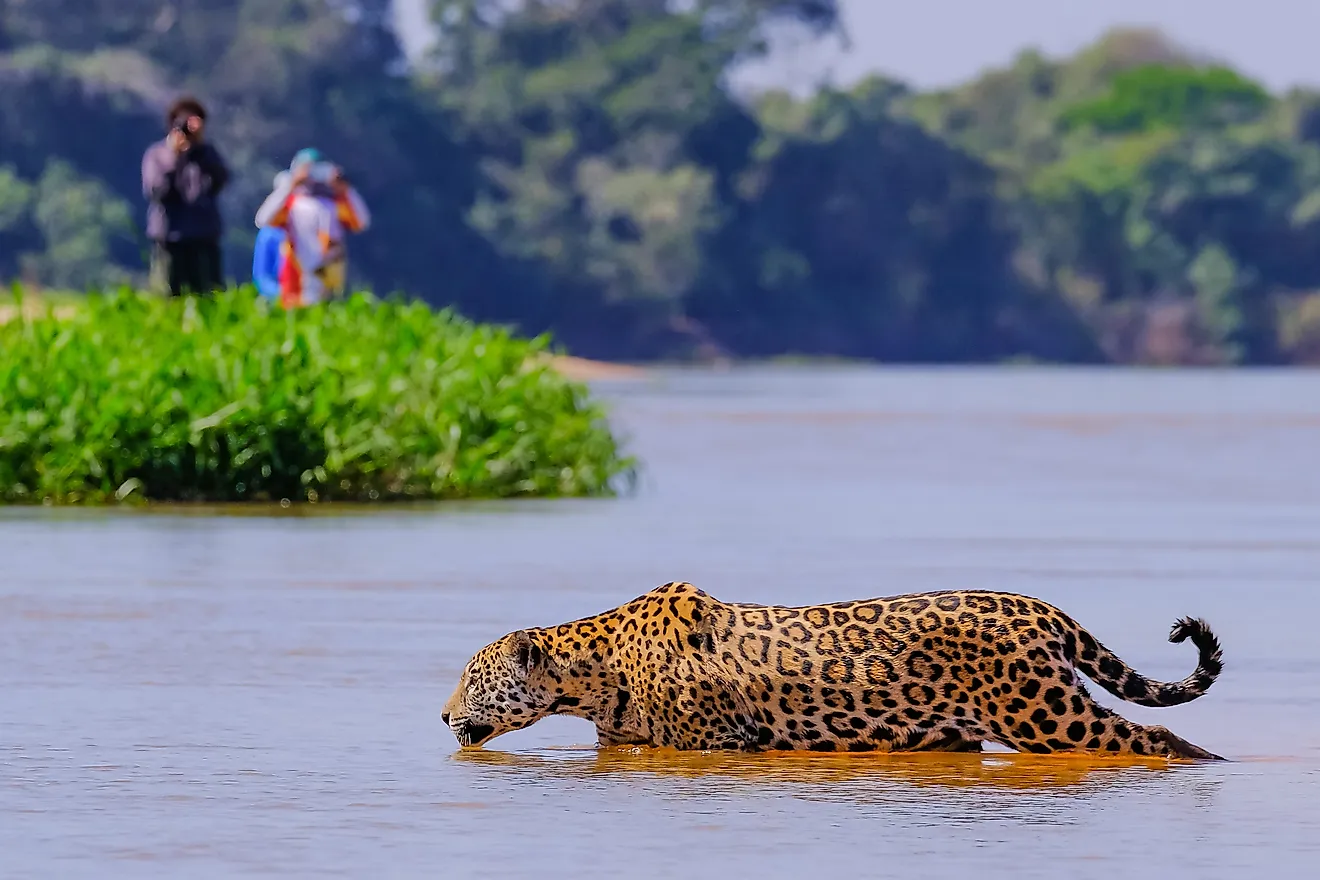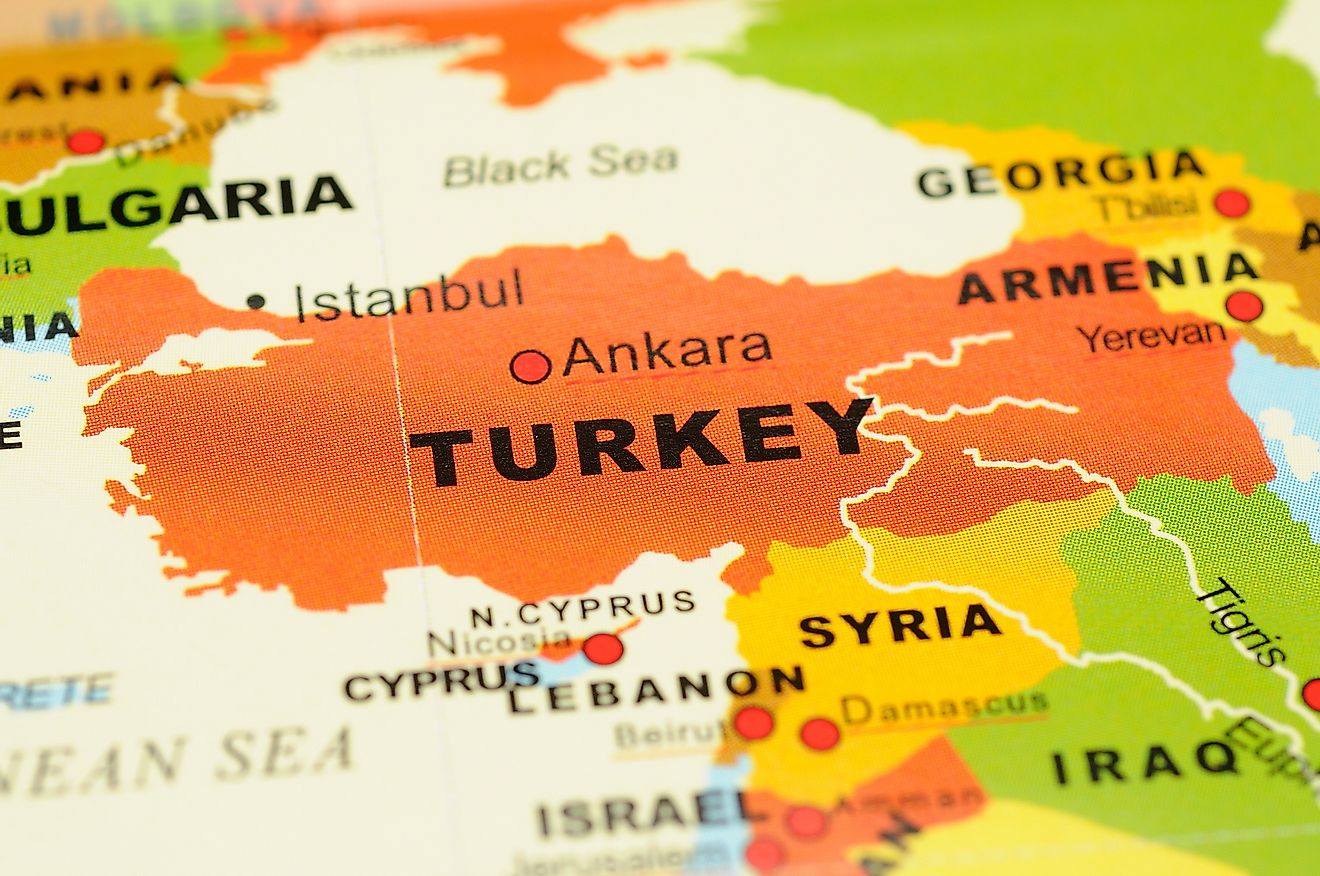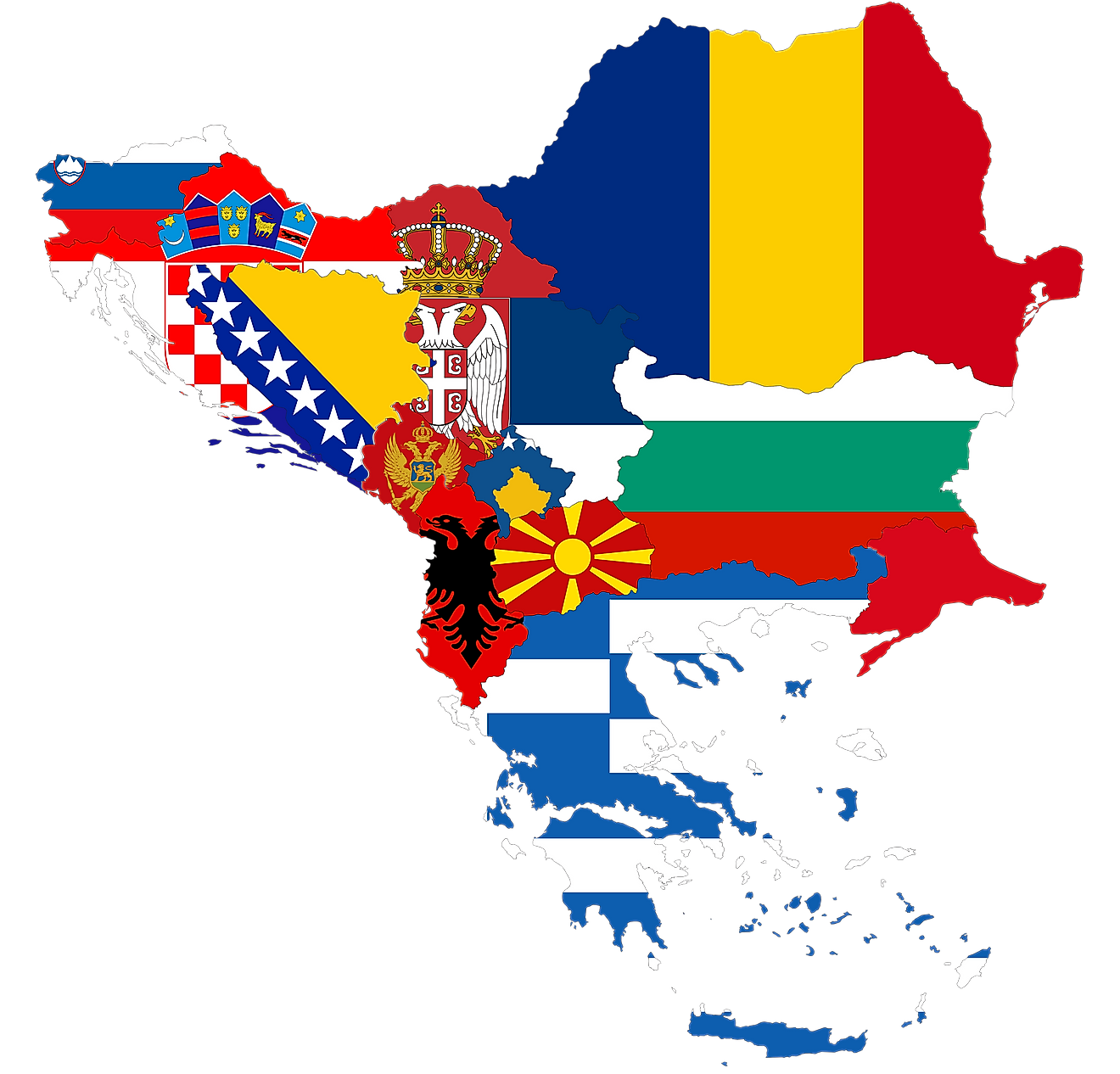Some Absolutely Fascinating Facts About A Tornado
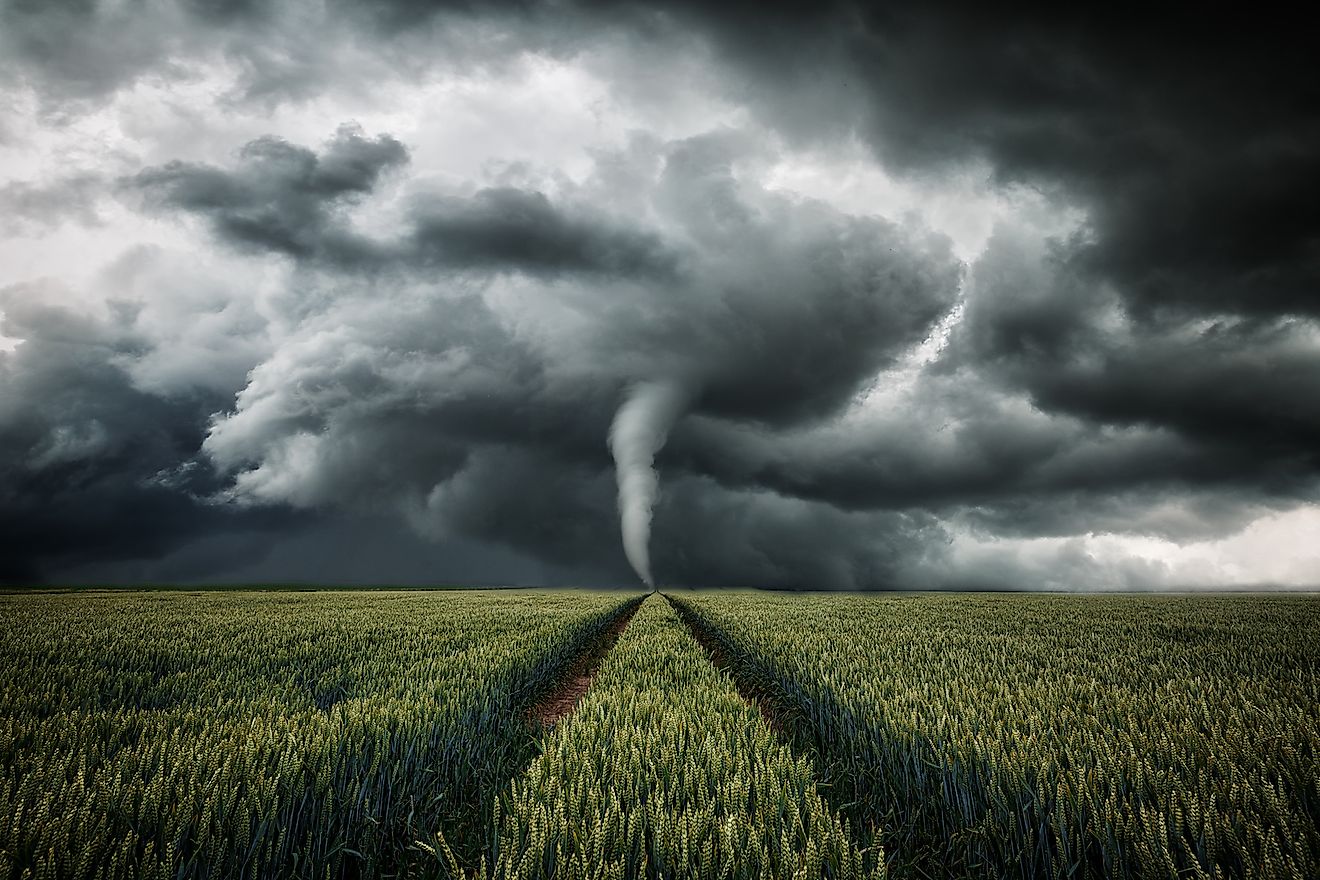
- The year 2011 saw the largest tornado outbreak triggered by a single weather system in recorded history. From April 25 to 28, the Super Outbreak struck the southeast of the United States.
- The Enhanced Fujita Scale is an updated version of the original Fujita Scale.
- In the United States, there are over 1,000 tornadoes recorded each year.
- .Tornadoes can last from several seconds to more than an hour.
In the United States, there are over 1,000 tornadoes recorded each year. Other locations that experience tornadoes are Bangladesh, Australia, Japan, and even the United Kingdom. 60 to 70% of tornadoes are weak, they account for less than 5% of all deaths, but it is not uncommon for a violent tornado to take place. In places where tornadoes are common, precautions are put into place to ensure people are kept safe; some schools practice tornado drills to help prepare children for tornado season. Find out 10 fascinating facts about tornadoes below:
10. Tornadoes are measured on the Enhanced Fujita Scale
The Enhanced Fujita Scale is an updated version of the original Fujita Scale. The new EF scale was implemented on February 1, 2007. This rating is based on wind speeds and related damage. The ratings range from EF0 to EF5. An EF0 tornado has a wind speed between 65 and 85mph and will cause light damage, whereas an EF5 tornado has a wind speed of 201mph or above. The damage caused by an EF5 volcano is catastrophic.
9. The largest tornado outbreak happened in 2011
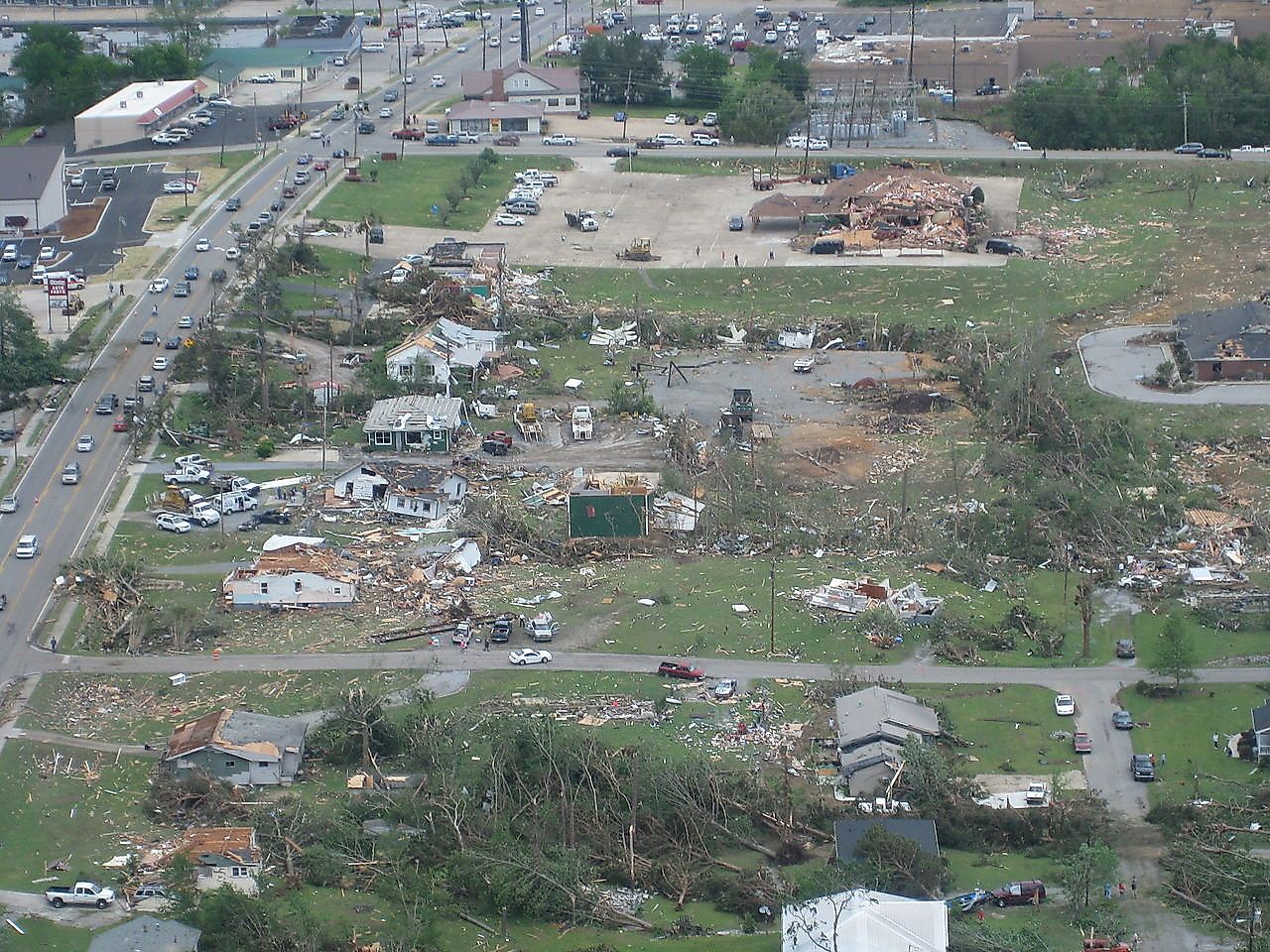
The year 2011 saw the largest tornado outbreak triggered by a single weather system in recorded history. From April 25 to 28, the Super Outbreak struck the southeast of the United States. It is believed that over 300 tornadoes occurred across 15 states, but the state that was affected the most was Alabama. There were more than 230 fatalities and over 2,000 people injured. One of the hardest-hit areas was Tuscaloosa, where a tornado that measured nearly a mile wide passed through the city’s residential areas. The tornado was a 5 on the Enhanced Fujita Scale with wind speeds of approximately 200mph. The cost of the overall damages caused by the Super Outbreak reached USD 10.2 billion.
8. North America’s geography makes it particularly susceptible to tornadoes
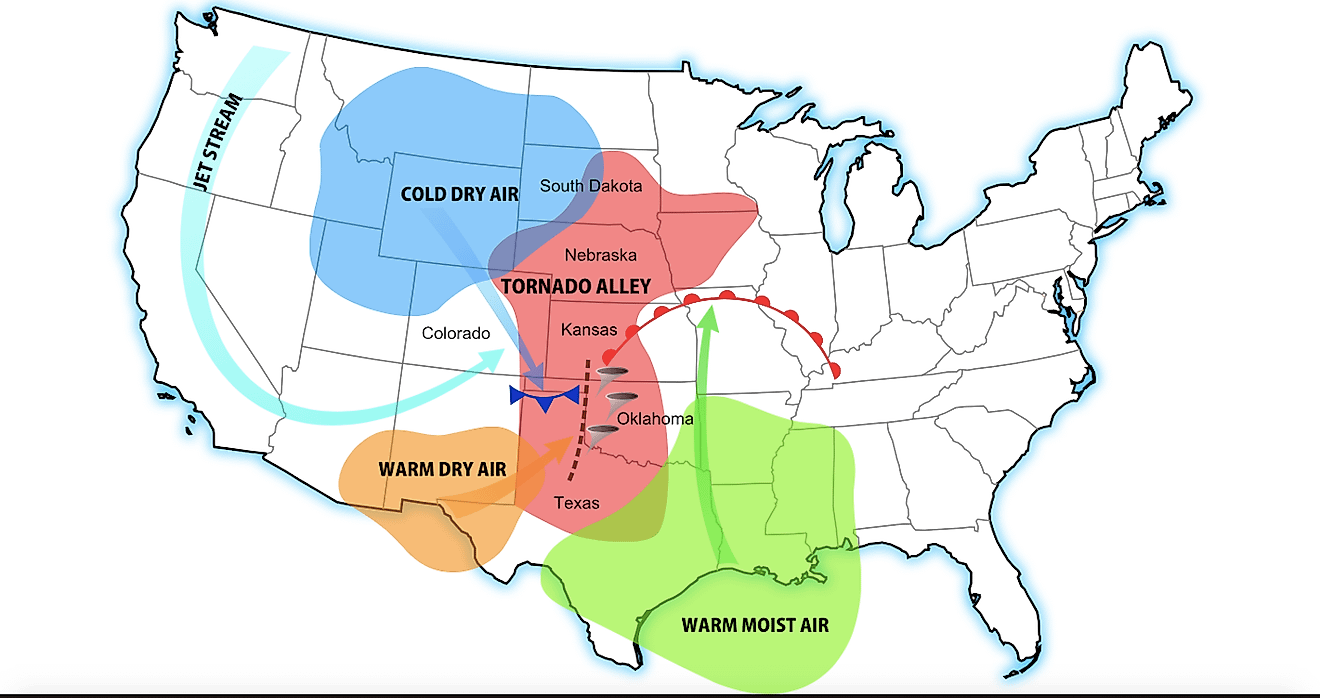
North America’s geography and location create perfect tornado conditions. The warm air from the Gulf of Mexico collides with the cold air from the Rocky Mountains and Canada. The combination of pressure, humidity and speed of the colliding conditions creates storm energy. The jet stream also adds to the changes in pressure, which encourages cyclonic effects. The largest and most damaging tornadoes occur from Supercells, which are thunderstorms characterized by a mesocyclone: a vortex of rapidly rotating air that has a persistent updraft.
7. Tornadoes predominantly strike along Tornado Alley
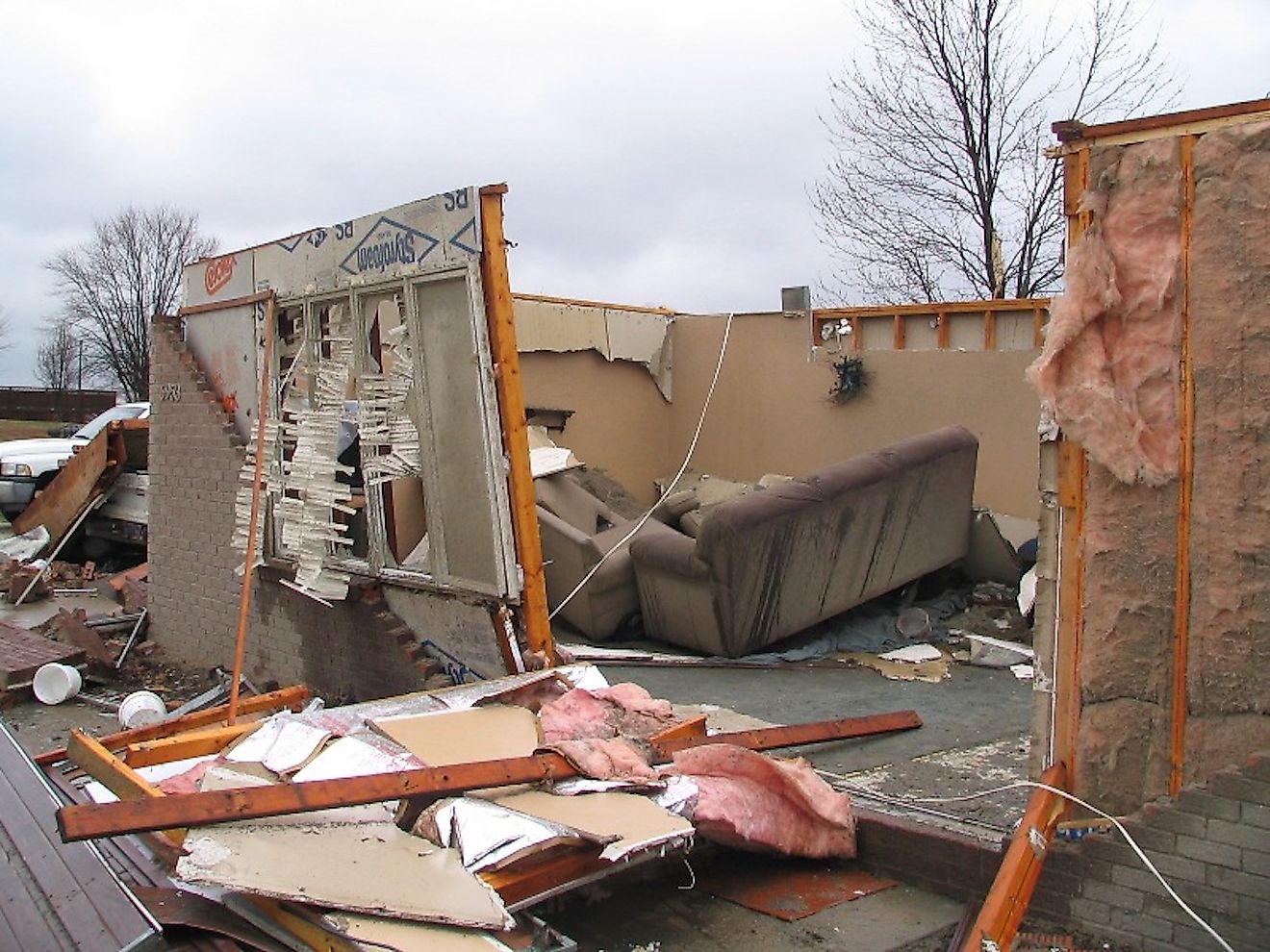
Tornado Alley is a stretch of flat land between Texas and North Dakota; it is an area of the United States where tornadoes are the most frequent. Tornadoes usually take place here in late spring and early fall. The Alley is a hotspot for supercell thunderstorms, which often create tornadoes that are EF2 or above. The people who live in Tornado Alley take precautionary measures to ensure their safety when a twister hits; these include storm cellars, tornado sirens and frequent media coverage to keep residents informed.
6. The 1925 Tri-State tornado is the deadliest in U.S history
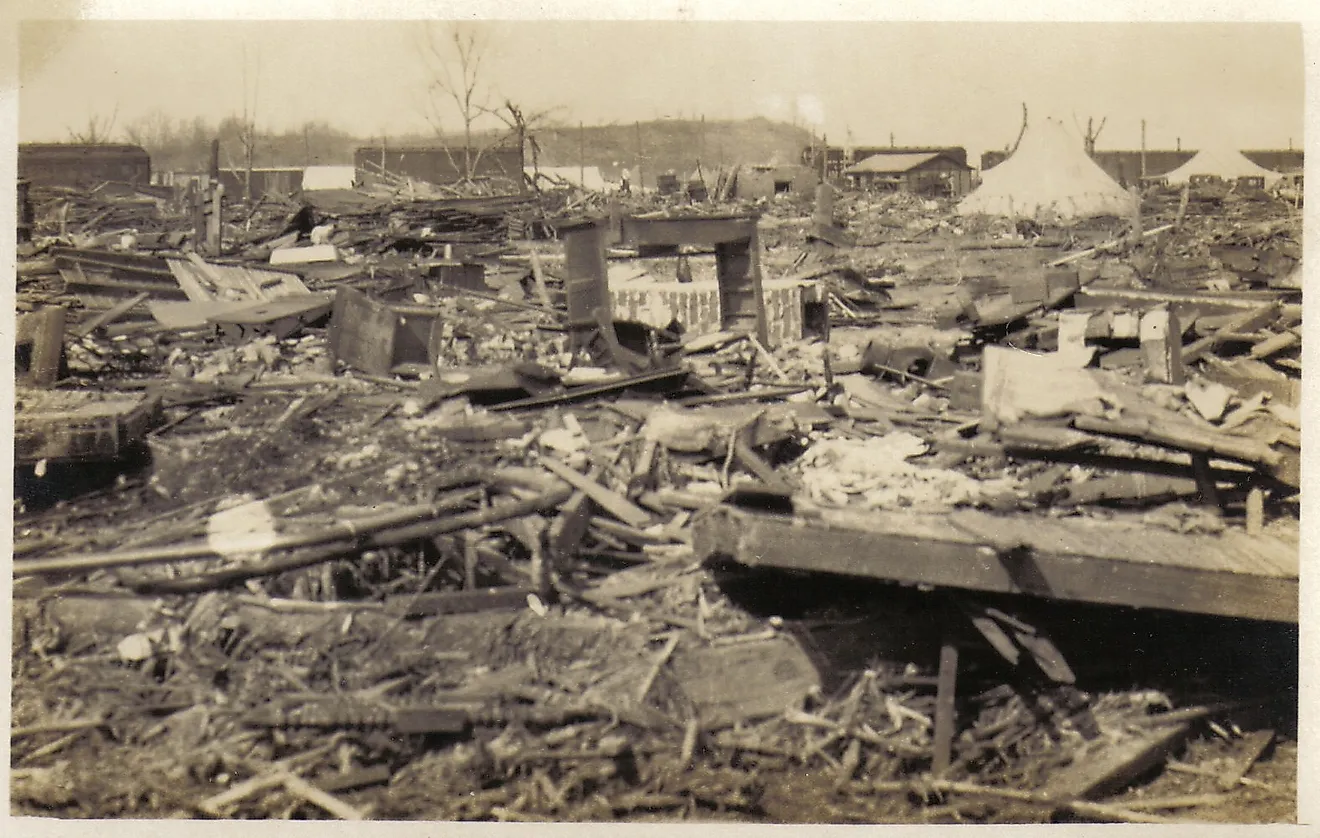
The Tri-State Tornado traveled from Missouri to Indiana on March 18, 1925. The tornado began in Ellington, Missouri; it had taken its residents by surprise as there was no suggestion of a twister in the weather forecast. The tornado moved rapidly through Missouri’s towns before crossing the Mississippi River into southern Illinois. When it arrived, it destroyed the towns of De Soto, Murphy and Gorham. But Murphysboro was the hardest hit; the tornado caused 234 fatalities. By the time the tornado reached Indiana’s Wabash River, 600 people had lost their lives. A further 71 lives were taken in Indiana and more towns were ravaged before the tornado dissipated southwest of Petersburg.
5. Tornadoes form when warm, humid air meets cold, dry air
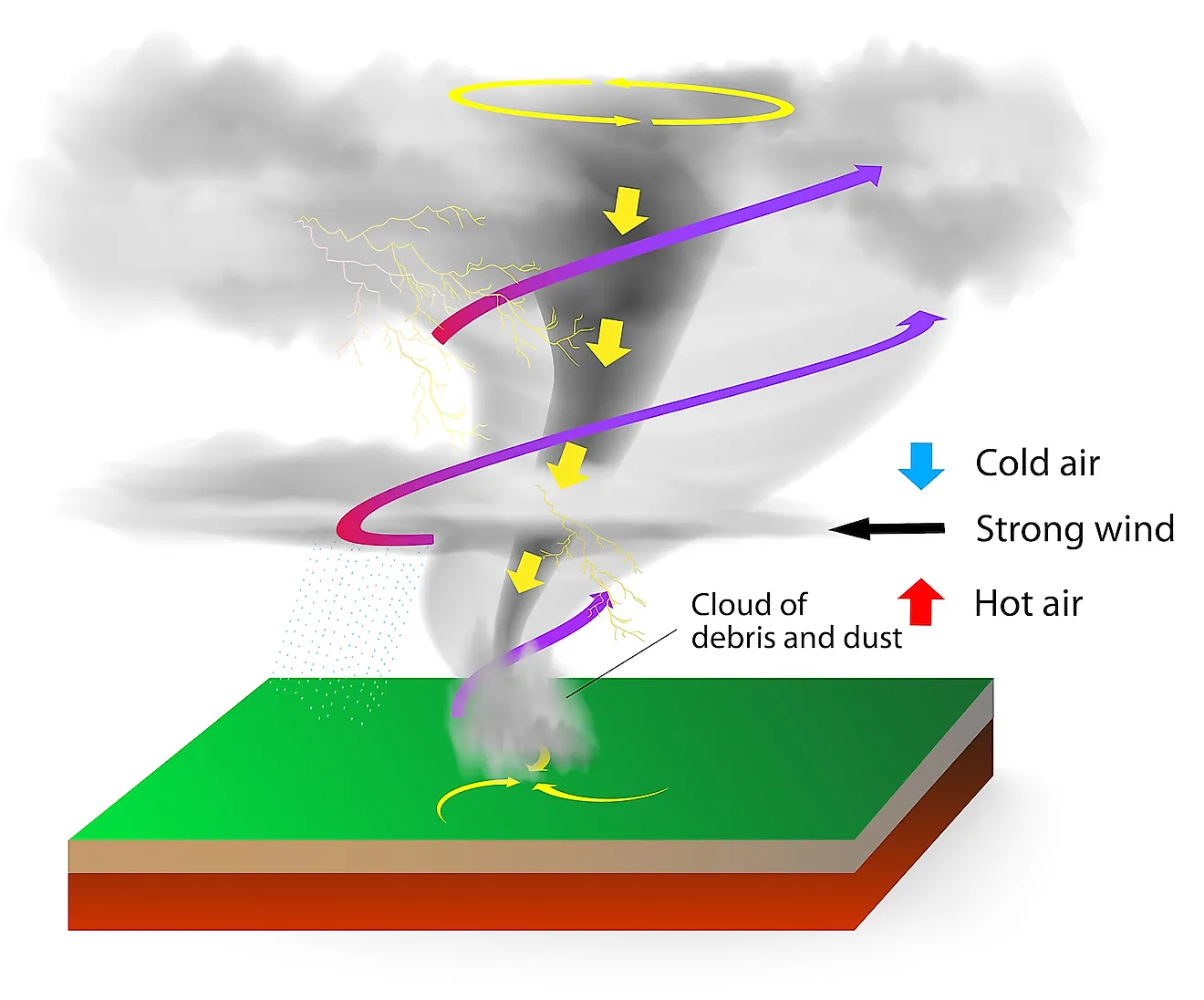
When warm, humid air meets cold, dry air, the denser cold air is pushed over the warm to produce a thunderstorm. The warm air then rises through the cold to create an updraft, and if there are fast, varying winds, then the updraft will begin to rotate. The rotating updraft, called a mesocyclone, draws in more warm air, which causes its rotation speed to increase. The cool air, which is usually fed by the jet stream, provides the cyclone with more energy. The moist air in the cyclone forms a funnel cloud that continues to grow; when it touches the ground, it becomes a tornado.
4. Tornadoes can last from minutes to hours
Tornadoes can last from several seconds to more than an hour. On average, tornadoes last less than 10 minutes and travel a distance of five miles before dissipating. The longest recorded tornado is the infamous 1925 Tri-State tornado that lasted around three-and-a-half hours on the ground. In 2015, Canada experienced a three-hour tornado that tore through the Manitoba province. Thankfully, no injuries or deaths were reported.
3. Tornadoes come in different shapes and sizes
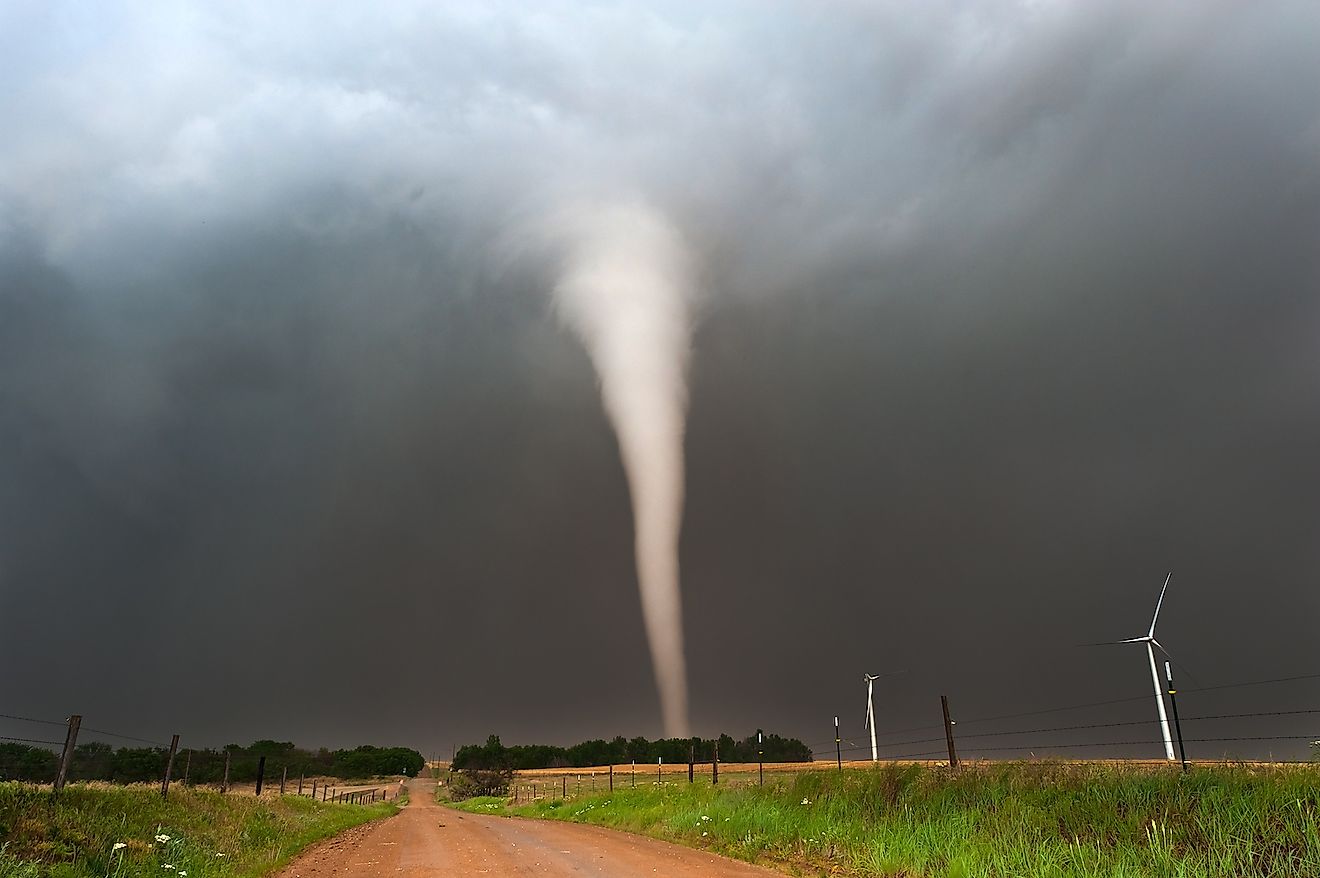
Tornadoes typically come in three sizes: weak, strong, and violent. A tornado’s size is based on how large it is, how long it lasts, and how it compares to the Enhanced Fujita Scale. A weak tornado is the most common, it accounts for up to 69% of all tornadoes; they usually last less than 10 minutes and cause the least damage. In contrast, the violent tornado is the least common, but very deadly as it makes up 70% of all tornado deaths. Tornadoes' shapes also vary; the most common is the rope tornado. The most recognized is the cone tornado, which is what people think of when they conjure up images of tornadoes. Wedge, multi-vortex, satellite, and non-supercell are other common tornado types.
2. The world’s deadliest tornado happened in Bangladesh in 1989
The Daulatpur–Saturia tornado took place in Bangladesh in 1989. Tornadoes take place in Bangladesh during the transition to the monsoon season in spring; the country experiences some of the strongest tornadoes on earth with an intensity of EF4 to 5. However, Bangladesh only averages more than six tornadoes per year. On April 26, 1989, the Manikganj district of Bangladesh was ravaged by a tornado that was over one-mile-wide and 10 miles long. The twister destroyed the town of Manikgank Sadar and Saturia, killing more than 1,300 and injuring over 12,000 people.
1. Tornadoes have happened in every continent except Antarctica
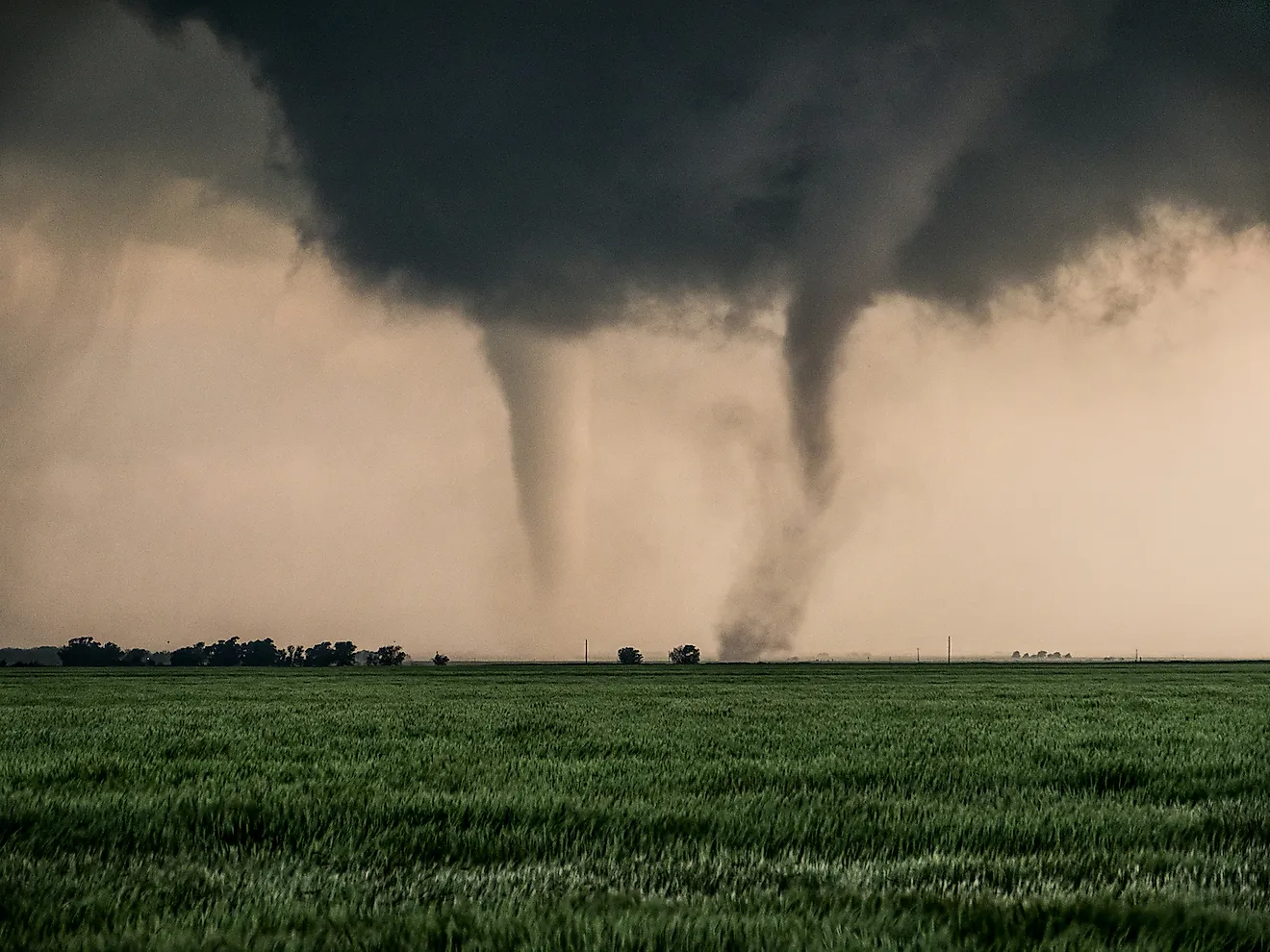
Tornadoes have taken place on every continent on earth except Antarctica. However, experts say it is not impossible for a twister to take place, but it is extremely unlikely. For tornadoes to form, there needs to be a moist warm climate where hot and cold air meet. Antarctica’s cold conditions and no warm air means a tornado is extremely unlikely to ever happen.
